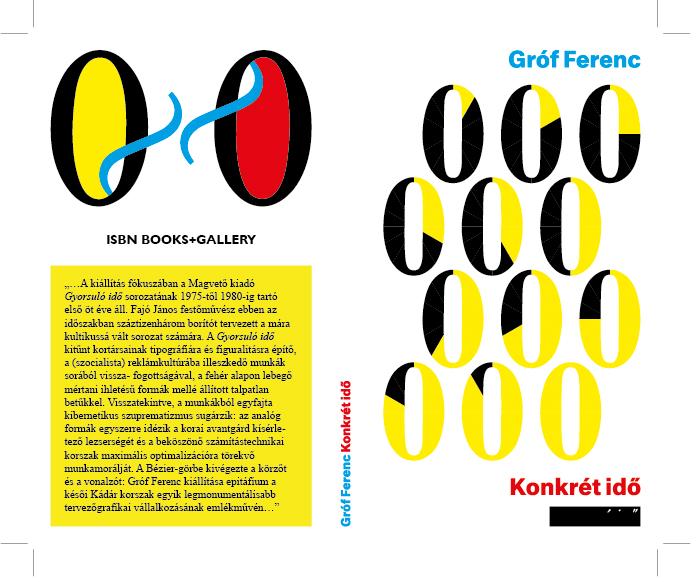
- This event has passed.
Gróf Ferenc – Konkrét idő / Concrete Time
2021-08-03 @ 17:00 - 2021-08-27 @ 19:00

„…A kiállítás fókuszában a Magvető kiadó Gyorsuló idő sorozatának 1975-től 1980-ig tartó első öt éve áll. Fajó János festőművész ebben az időszakban száztizenhárom borítót tervezett a mára kultikussá vált sorozat számára. A Gyorsuló idő kitűnt kortársainak tipográfiára és figuralitásra építő, a (szocialista) reklámkultúrába illeszkedő munkák sorából visszafogottságával, a fehér alapon lebegő mértani ihletésű formák mellé állított talpatlan betűkkel. Visszatekintve, a munkákból egyfajta kibernetikus szuprematizmus sugárzik: az analóg formák egyszerre idézik a korai avantgárd kísérletező lezserségét és a beköszönő számítástechnikai korszak maximális optimalizációra törekvő munkamorálját. A Bézier-görbe kivégezte a körzőt és a vonalzót: Gróf Ferenc kiállítása epitáfium a késői Kádár korszak egyik
legmonumentálisabb tervezőgrafikai vállalkozásának emlékművén…”
A kiállítás a Fajó Alapítvány támogatásával valósult meg.

Ferenc Gróf – Concrete Time
3 August – 27 August 2021.
Opening: 3rd of August from 5 to 9pm in the presence of the artist
‘…The focus of the exhibition is on the series Concrete Time by Magvető Publishing from 1975 till 1980. The painter János Fajó in this period made one hundred and thirteen covers for the now cultic series. Concrete Time stood out from its contemporaries with its restraint, geometric inspired shapes floating in front of a white background and sans-serif fonts which didn’t fit into the socialist advertisement culture neither in typography nor in figuration. In retrospect the works radiate a kind of cybernetic suprematism: the analogue forms evoke both the experimentalism and casualness of the early avant-garde and the maximalist optimization oriented work ethic of the forthcoming computer age. The Bézier curve executed the ruler and the compass: Ferenc Gróf’s exhibition is an epitaph on the memorial of one of the most monumental graphic ventures of the late Kádár era…’
The exhibition was supported by the Fajó Foundation.